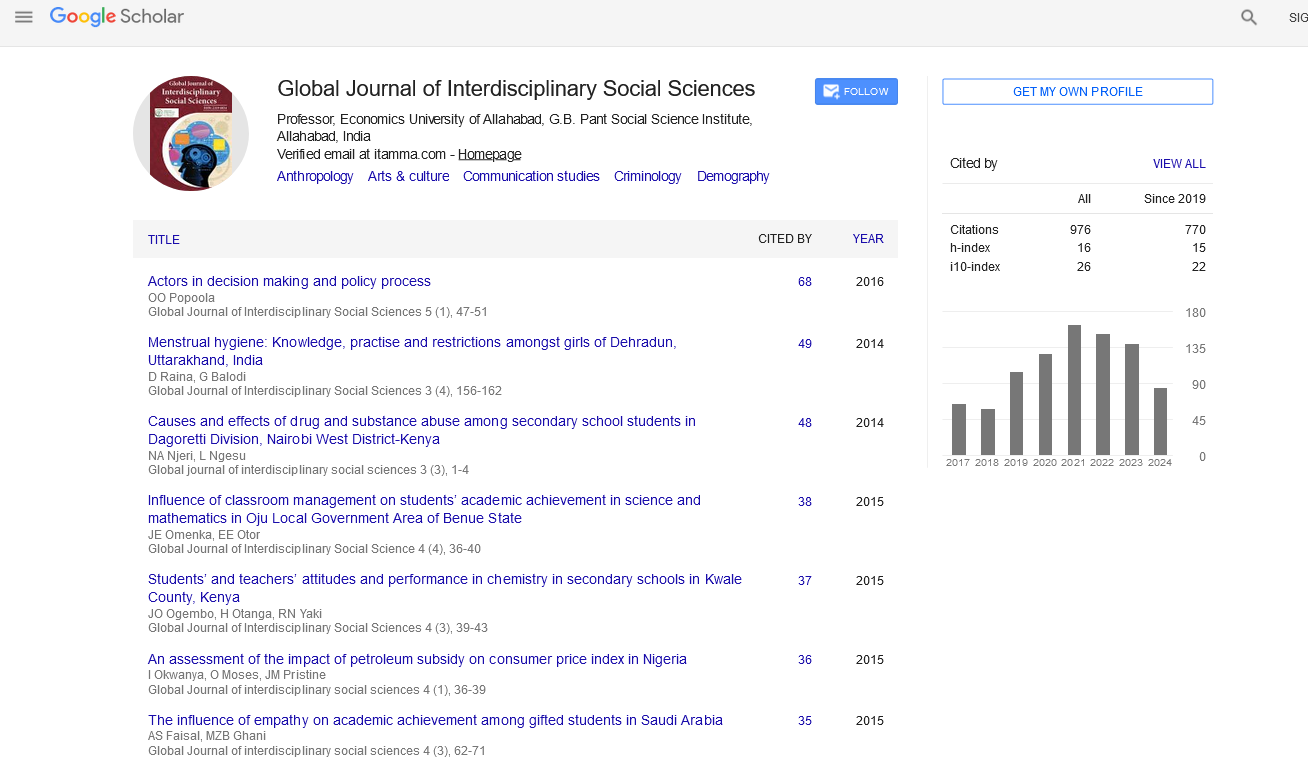Indexed In
- JournalTOCs
- Google Scholar
Useful Links
Share This Page
Journal Flyer

Open Access Journals
- Agri and Aquaculture
- Biochemistry
- Bioinformatics & Systems Biology
- Business & Management
- Chemistry
- Clinical Sciences
- Engineering
- Food & Nutrition
- General Science
- Genetics & Molecular Biology
- Immunology & Microbiology
- Medical Sciences
- Neuroscience & Psychology
- Nursing & Health Care
- Pharmaceutical Sciences
Abstract
An Assessment of Lectures and Students Views on Introduction of Conveyor Belt Marking over Centralised Traditional Marking: A Case at Zimbabwe Open University
Rittah Kasowe
The purpose of the study was to examine the strengths and weaknesses of the traditional centralised marking and explore possibilities and challenges of introducing conveyor belt marking at Zimbabwe Open University. Individual interviews were carried out for students enrolled in both undergraduate and postgraduate programmes in the Faculty of; Arts and Education, Commerce and Law, Applied Social Science and Science and Technology. Lecturers who have been involved in centralised marking were purposefully sampled to answer questionnaires. It was established that students understudy were more supportive of using belt marking unlike the Lecturers who pointed out too many challenges before implementing it. The challenges identified to be experienced in belt marking were organisation and management of the marking process. It was indicated that the varying level of commitment among markers, discipline, their speed at marking and mastery of content related to some questions posed great challenge to belt marking. Belt marking supervisors had to mark their own scripts, moderating those of group members and doing other administrative tasks. The solutions to the challenges involved identifying subject specialists across the University departments, staff recruitment and in service training for Staff. There was need for Departmental Chairpersons and Subject Coordinators across Faculties need to liaise with each other for the smooth running of the marking sessions. If ever belt marking was to be introduced in Open and Distance Learning institutions, there is need to revamp the whole system through training, staffing rationalisation and recruitment of permanent staff in the departments.

